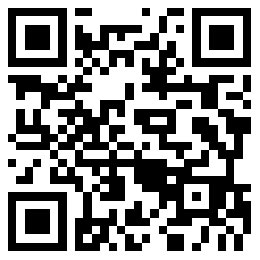谷歌CEO談“探月”項(xiàng)目:找一個(gè)“零起步百萬美元”研究課題

|
????多年來,,谷歌公司(Google)首席執(zhí)行官拉里?佩奇一直懷揣著一個(gè)美妙的夢(mèng)想,那就是用氣球代替衛(wèi)星進(jìn)行通訊,。 ????這個(gè)想法很有意思,,原因是多方面的。制造并發(fā)射一顆衛(wèi)星需要幾年時(shí)間,,還要耗費(fèi)數(shù)百萬美元資金,。對(duì)習(xí)慣于發(fā)布“測(cè)試版”產(chǎn)品并通過快速迭代來予以完善的人來說,這是一個(gè)巨大的創(chuàng)新障礙,。佩奇最近接受采訪時(shí)說:“在開發(fā)這些東西時(shí)會(huì)遇到相當(dāng)大的抵觸,。”此外,,為推出新產(chǎn)品而投入的成本和時(shí)間經(jīng)常會(huì)產(chǎn)生技術(shù)鎖定效應(yīng)——如果你為某項(xiàng)工作投入了幾百萬美元,,你就會(huì)堅(jiān)持使用其中的技術(shù),而不會(huì)冒著受挫的風(fēng)險(xiǎn)來設(shè)法完善它,。 ????氣球提供了另一種通訊方式,。假如能在一天內(nèi)完成放出氣球,、測(cè)試,、回收、吸取經(jīng)驗(yàn)教訓(xùn),、然后再來一遍的過程,,會(huì)怎么樣呢?而且,,第二天還可以追溯,、重復(fù)這個(gè)過程。佩奇說:“人們自然會(huì)問這樣的問題,?!?/p> ????同時(shí),這個(gè)想法很瘋狂,,還沒有人付諸實(shí)施,。對(duì)佩奇來說,這是一個(gè)經(jīng)典的“零起步百萬美元”研究課題,。他指出:“你會(huì)發(fā)現(xiàn)沒有人開展這項(xiàng)工作,,你也知道還沒有人為此投入資金?!?/p> ????谷歌許多“探月計(jì)劃”都從這些起步為零的百萬美元課題開始,,比如無人駕駛汽車和高海拔風(fēng)力發(fā)電機(jī),以及最近用于檢測(cè)早期癌癥的可服用納米技術(shù)微粒。同時(shí),,由于還沒有人從事這些研究,,谷歌得以把這些領(lǐng)域的一些頂尖人才招至麾下。佩奇說這給谷歌帶來了巨大的優(yōu)勢(shì),。 ????但并非每個(gè)瘋狂的想法都值得實(shí)施,。那么,如何區(qū)分那些瘋狂但有可能的想法與純粹的狂想呢,?佩奇表示,,谷歌采用一個(gè)系統(tǒng)性的漸進(jìn)方式。 ????通訊氣球的一大問題是懸浮時(shí)間是否足夠長(zhǎng),。要用于通訊的話,,通常情況下氣球需在空中停留幾個(gè)星期,甚至幾個(gè)月,。氣球?qū)<艺J(rèn)為這絕不可能,。 ????當(dāng)然,佩奇在谷歌上進(jìn)行了反反復(fù)復(fù)的搜索:“最終我找到了這幅1960年的氣球圖片,,它曾繞著地球飛行了大概五次,。如果1960年的人能做到這一點(diǎn),我們也能做到,。我們有更好的材料,。” ????如今,,Project Loon正在對(duì)一批氣球進(jìn)行測(cè)試——谷歌的“探月”實(shí)驗(yàn)室Google X去年披露了這個(gè)項(xiàng)目,。測(cè)試氣球通常每次都能在空中停留100天,其累計(jì)漂浮的距離已超過300萬公里,。與澳大利亞,、新西蘭和智利電信公司聯(lián)合開展的測(cè)試表明,這些氣球能為農(nóng)村地區(qū)提供10MB/秒的通訊帶寬,。 ????佩奇的想法再已不再是零起步百萬美元課題,。谷歌已經(jīng)為這些項(xiàng)目投入了數(shù)百萬美元,聘請(qǐng)了頂尖科研人員,,并在不同環(huán)境下進(jìn)行了幾百次測(cè)試,。究其根源,這些“探月”項(xiàng)目源于兩個(gè)關(guān)鍵因素:佩奇天生的好奇心和他進(jìn)行自主學(xué)習(xí)的沖勁,。佩奇說這種沖勁源于自己在蒙特梭利學(xué)校(Montessori school)接受的教育,。 ????他說:“如何稍稍進(jìn)行一些探究,然后如何把結(jié)果轉(zhuǎn)化成可以改變10億人通訊方式的產(chǎn)品,,這是最激動(dòng)人心的部分,?!?/p> ????激動(dòng)人心。這樣的說法很是直截了當(dāng)——至少對(duì)世界上最有膽識(shí)的首席執(zhí)行官來說是這樣,。佩奇表示:“當(dāng)你看到一些證明某件事可行的證據(jù)時(shí),,你就得盡力把事情弄清楚。你會(huì)說,,也許這就是我們?cè)搯柕膯栴},。”(財(cái)富中文網(wǎng)) ????譯者:Charlie ????審校:李翔 |
????For years, Google CEO Larry Page had dreamed about a tantalizing possibility: using balloons, rather than satellites, for communications. ????There were plenty of reasons why the idea was interesting. Satellites take years to build and cost millions of dollars to build and launch. For someone used to releasing products in “beta,” and perfecting them through rapid iteration, this was a huge barrier to innovation. “You’re pretty averse in your development of these things,” Page said during a recent interview. What’s more, the cost and time involved in a launch often led to technology lock-in—if something you’ve invested millions in works, you’re going to stick with it rather than trying to perfect it and risk a setback. ????Balloons offered an alternative. What if you could launch a balloon, test it, bring it down, learn something, and repeat, all in the course of a day? Then, you could go back and do it all over the next day. “It’s a natural question to ask,” Page said. ????It was also a crazy enough idea that no one was working on it. To Page, that was a classic “zero million dollar” research problem. “You find no one working on it,” he said. “And you know that zero million dollars are going into that problem.” ????Many of Google’s moonshots—self driving cars, high-altitude wind turbines, and most recently ingestible nano-particles for early detection of cancer—started as zero million dollar problems. And as no one was working on them, Google was able to attract some of the top people in field, which Page says gives the company a huge advantage. ????But not every crazy idea is worth pursuing. So how do you sort the crazy-but-possible ideas from the plain crazy ones? Page said Google takes a methodical and gradual approach. ????A big question with balloons was whether they could stay up long enough—weeks or months on end—on a regular basis to be useful for communications. Ballooning experts believed it was impossible. ????Page took to Google, of course, to search and search and search. “Eventually I found this balloon image from 1960 that had gone around the Earth like five times,” he said. “If somebody in 1960 can do that, we can do that. We have better materials.” ????Today, Project Loon, which the company’s moonshot lab, Google X, unveiled last year, is testing a fleet of balloons that are routinely staying up in the air for 100 days at a time. They’ve covered more than 3 million kilometers, or about 2 million miles. In tests with telecommunications companies in Australia, New Zealand and Chile, they’re delivering speeds of 10 megabits per second to rural areas. ????Page’s idea is no longer a zero million dollar problem. Google has invested millions in the projects, hired top scientists and conducted hundreds of tests in different environments. But at the genesis of this, and several other moonshots, there were some key ingredients: Page’s natural curiosity and his impulse for self-directed learning, which he traces to his education in a Montessori school. ????“How do you play detective a little bit and then how do you convert that into things that can transform how a billion people can get their connectivity,” he said. “That’s the exciting part.” ????Exciting. And fairly straightforward—at least if you’re the world’s most ambitious CEO. “You see some evidence that it’s possible and you try to figure things out,” Page said. “And you say, well, maybe that’s the question we should be asking.” |
-
熱讀文章
-
熱門視頻











